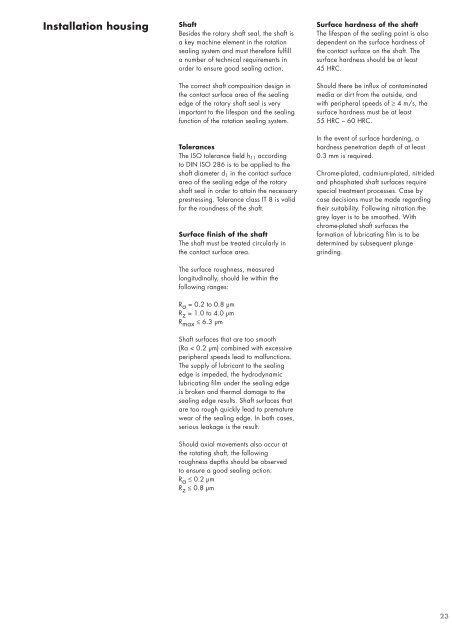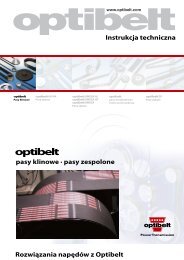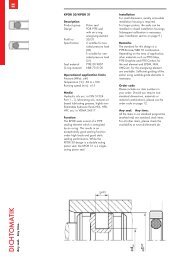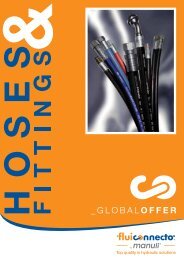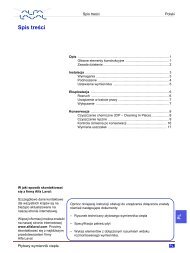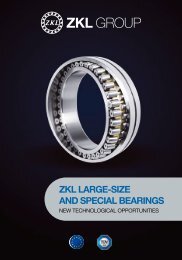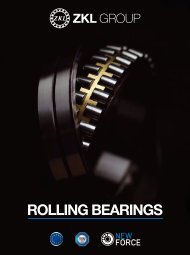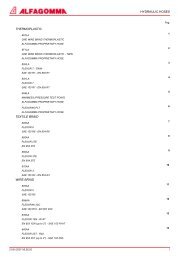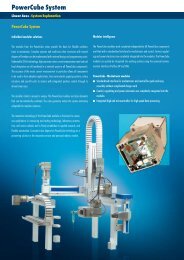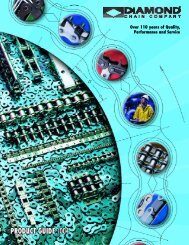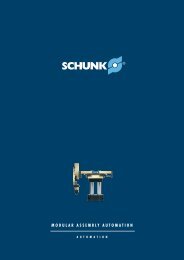DICHTOMATIK
DICHTOMATIK - Spinet
DICHTOMATIK - Spinet
- No tags were found...
Create successful ePaper yourself
Turn your PDF publications into a flip-book with our unique Google optimized e-Paper software.
Installation housing<br />
Shaft<br />
Besides the rotary shaft seal, the shaft is<br />
a key machine element in the rotation<br />
sealing system and must therefore fulfill<br />
a number of technical requirements in<br />
order to ensure good sealing action.<br />
The correct shaft composition design in<br />
the contact surface area of the sealing<br />
edge of the rotary shaft seal is very<br />
important to the lifespan and the sealing<br />
function of the rotation sealing system.<br />
Tolerances<br />
The ISO tolerance field h 11 according<br />
to DIN ISO 286 is to be applied to the<br />
shaft diameter d 1 in the contact surface<br />
area of the sealing edge of the rotary<br />
shaft seal in order to attain the necessary<br />
prestressing. Tolerance class IT 8 is valid<br />
for the roundness of the shaft.<br />
Surface finish of the shaft<br />
The shaft must be treated circularly in<br />
the contact surface area.<br />
Surface hardness of the shaft<br />
The lifespan of the sealing point is also<br />
dependent on the surface hardness of<br />
the contact surface on the shaft. The<br />
surface hardness should be at least<br />
45 HRC.<br />
Should there be influx of contaminated<br />
media or dirt from the outside, and<br />
with peripheral speeds of ≥ 4 m/s, the<br />
surface hardness must be at least<br />
55 HRC – 60 HRC.<br />
In the event of surface hardening, a<br />
hardness penetration depth of at least<br />
0.3 mm is required.<br />
Chrome-plated, cadmium-plated, nitrided<br />
and phosphated shaft surfaces require<br />
special treatment processes. Case by<br />
case decisions must be made regarding<br />
their suitability. Following nitration the<br />
grey layer is to be smoothed. With<br />
chrome-plated shaft surfaces the<br />
formation of lubricating film is to be<br />
determined by subsequent plunge<br />
grinding.<br />
The surface roughness, measured<br />
longitudinally, should lie within the<br />
following ranges:<br />
R a = 0.2 to 0.8 µm<br />
R z = 1.0 to 4.0 µm<br />
R max ≤ 6.3 µm<br />
Shaft surfaces that are too smooth<br />
(Ra < 0.2 µm) combined with excessive<br />
peripheral speeds lead to malfunctions.<br />
The supply of lubricant to the sealing<br />
edge is impeded, the hydrodynamic<br />
lubricating film under the sealing edge<br />
is broken and thermal damage to the<br />
sealing edge results. Shaft surfaces that<br />
are too rough quickly lead to premature<br />
wear of the sealing edge. In both cases,<br />
serious leakage is the result.<br />
Should axial movements also occur at<br />
the rotating shaft, the following<br />
roughness depths should be observed<br />
to ensure a good sealing action:<br />
R a ≤ 0.2 µm<br />
R z ≤ 0.8 µm<br />
23


